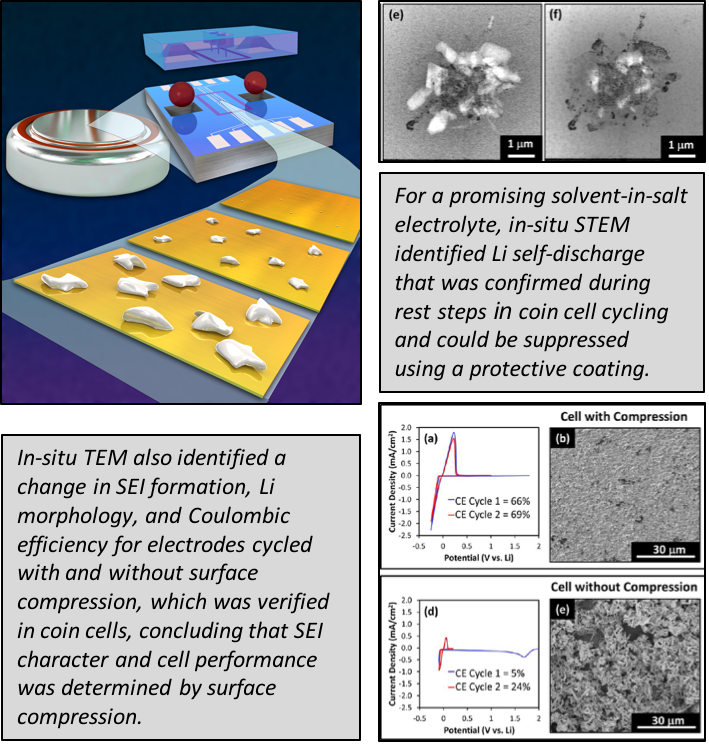
Scientific Achievement
We show that Li anode morphology and solid electrolyte interphase structure is dependent on surface compression, which affects the amount of self-discharge for an exciting solvent-in-salt electrolyte. Additionally, we show that coatings can suppress self-discharge.
Significance
In engineering batteries that contain a Li-metal anode for certain electrolytes, we show that cell compression and coatings will greatly impact the cell stability and performance.
Research Details
- Sandia-microfabricated electrochemical TEM discovery platform, identified key factors in controlling SEI character and Li-metal morphology.
- Li self-discharge was improved with cell compression and could be further improved with the use of a protective coating on the current collector, which also showed improved Li nucleation density.
- In-situ TEM cells are not compressed, so experiments must be carefully designed to ensure relevance.

